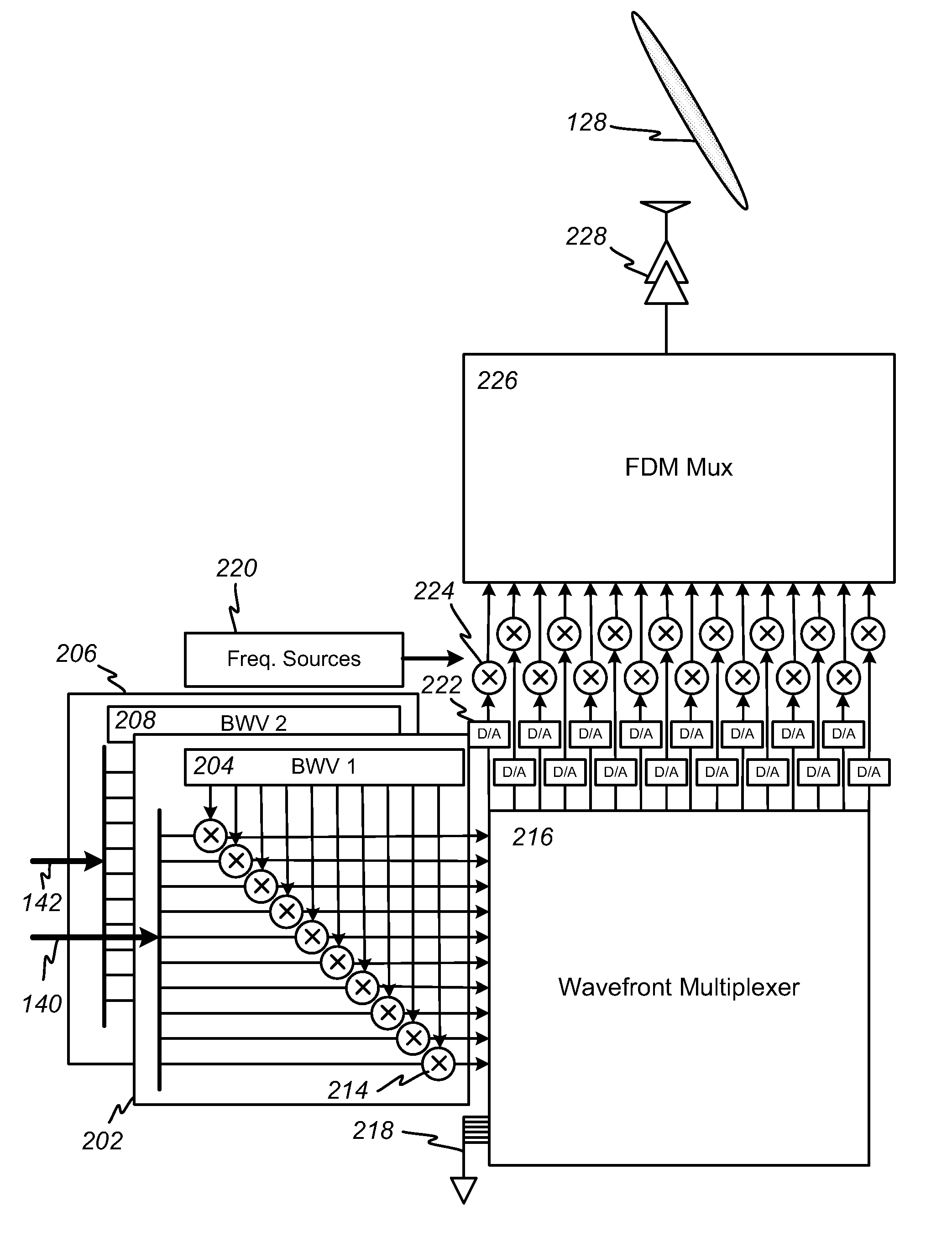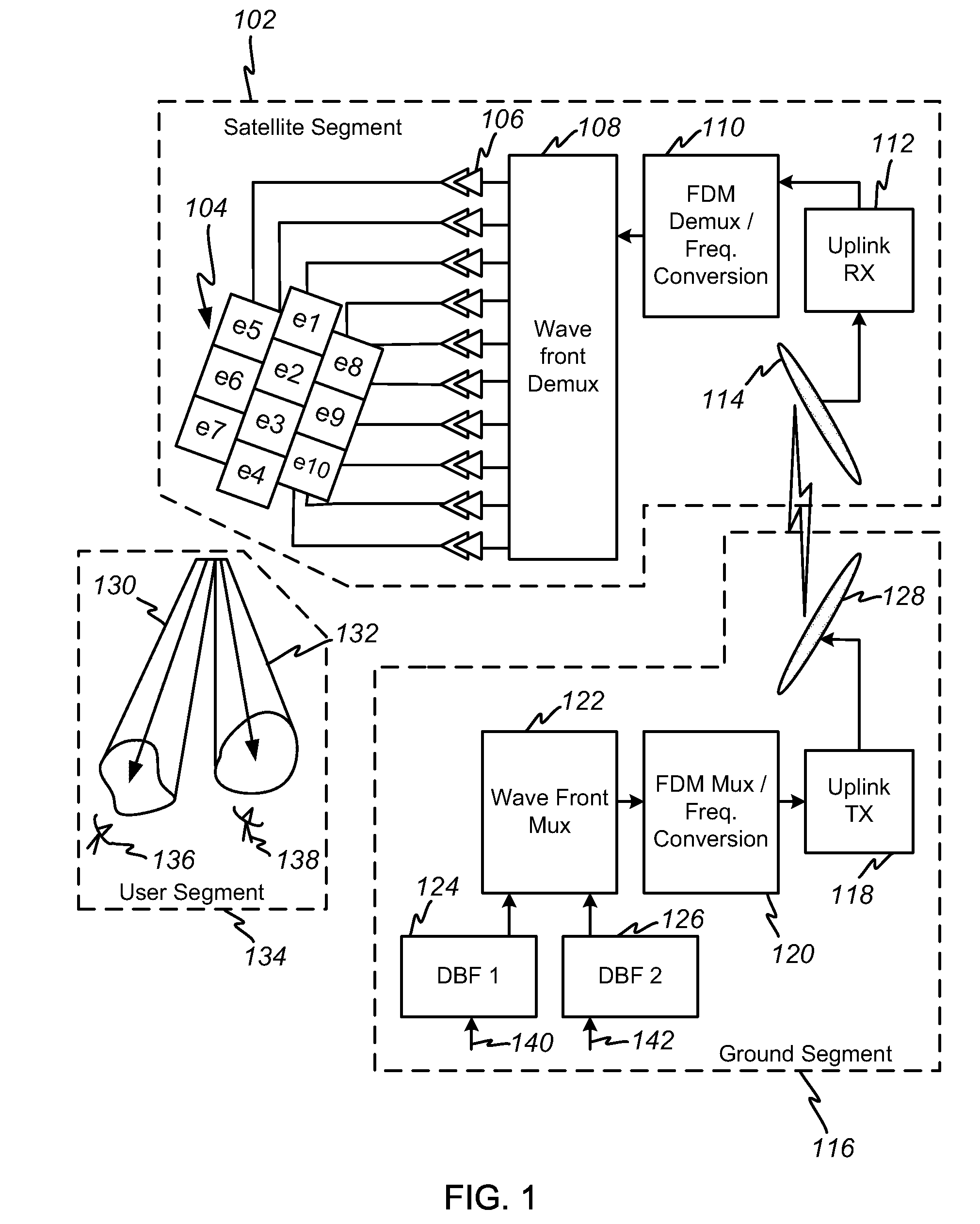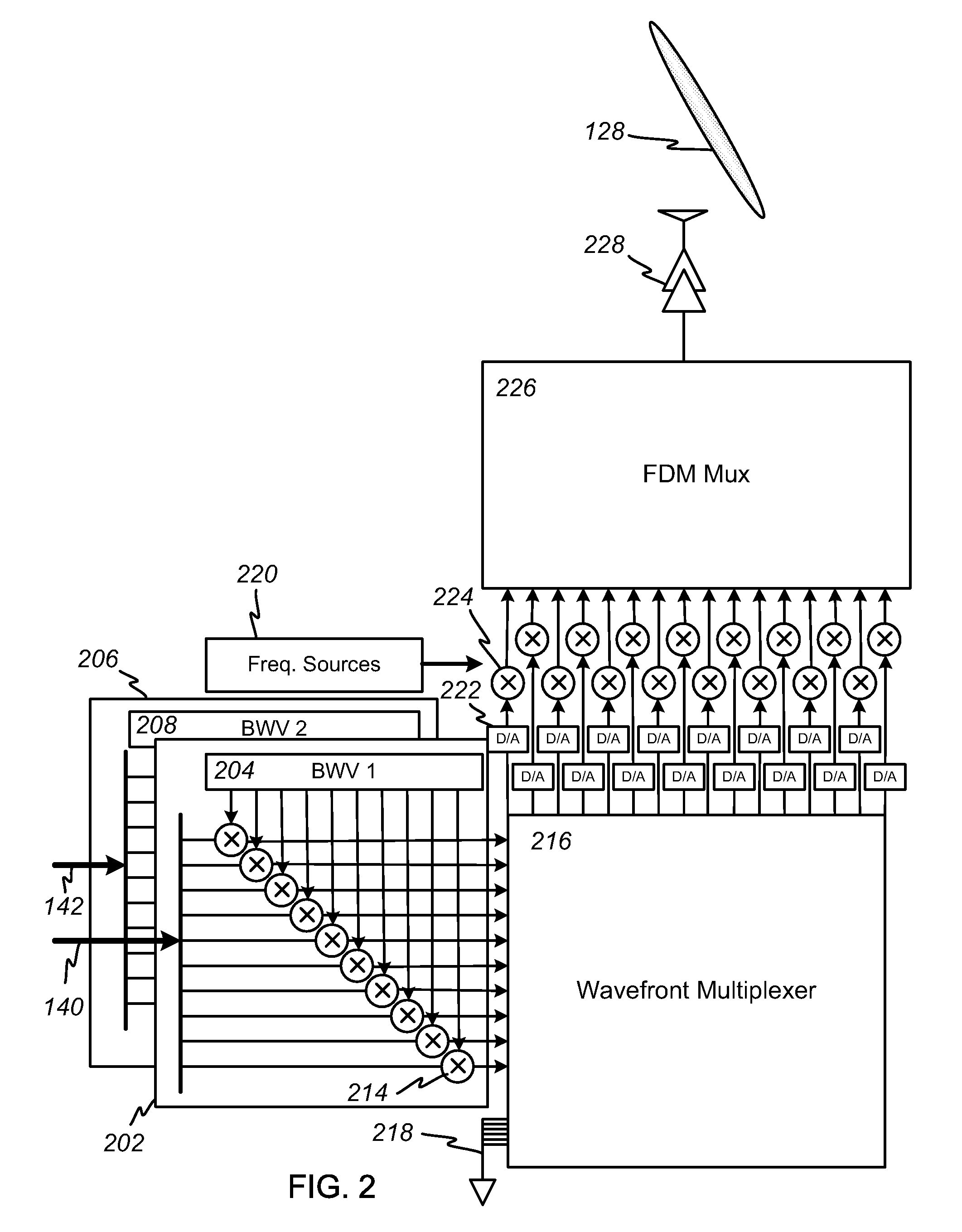Apparatus and method for remote beam forming for satellite broadcasting systems
a satellite broadcasting system and satellite technology, applied in the field of satellite broadcasting systems, can solve the problems of inherently limited flexibility and inability to upgrade to keep pace with more advanced ground systems, and achieve the effects of reducing potential distortion effects, improving downlink performance of the system, and distorting the shape of the broadcast beam
- Summary
- Abstract
- Description
- Claims
- Application Information
AI Technical Summary
Benefits of technology
Problems solved by technology
Method used
Image
Examples
Embodiment Construction
[0022]The invention provides a direct satellite broadcast system that includes a remote ground-based beam-forming facility. Beam-forming information is encoded into audio, video, or other content within the ground-based uplink facility. It is then uplinked to one or more satellites and downlinked via a segmented downlink broadcast antenna array. Beam-forming information encoded on the ground creates multiple downlink beams appearing at the satellite's downlink broadcast antenna array, allowing control over which content is radiated to which ground-based users.
[0023]FIG. 1 depicts a block diagram of a direct broadcast system in accordance with the present invention. The ground segment 116 includes a first digital beam forming (DBF) processor 124 and a second DBF processor 126. Content data 140 enters the first DBF processor 124, and content data 142 enters the second DBF processor 126. The two content streams may be identical or may be distinct, depending on the particular broadcast ...
PUM
 Login to View More
Login to View More Abstract
Description
Claims
Application Information
 Login to View More
Login to View More - R&D
- Intellectual Property
- Life Sciences
- Materials
- Tech Scout
- Unparalleled Data Quality
- Higher Quality Content
- 60% Fewer Hallucinations
Browse by: Latest US Patents, China's latest patents, Technical Efficacy Thesaurus, Application Domain, Technology Topic, Popular Technical Reports.
© 2025 PatSnap. All rights reserved.Legal|Privacy policy|Modern Slavery Act Transparency Statement|Sitemap|About US| Contact US: help@patsnap.com



